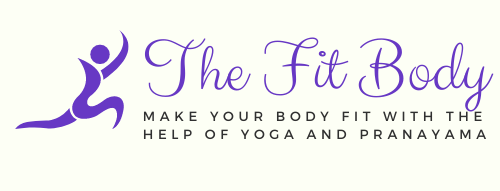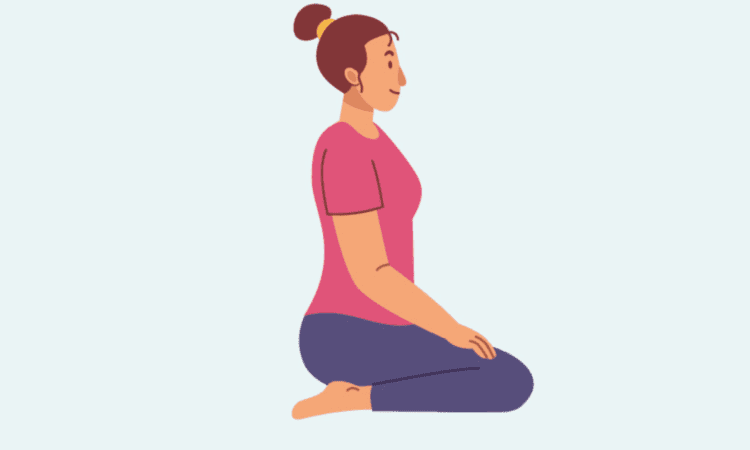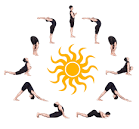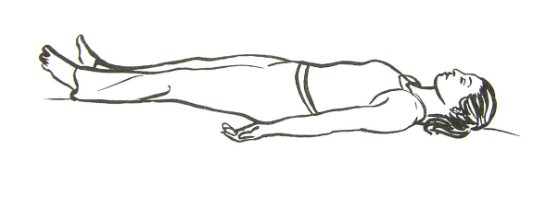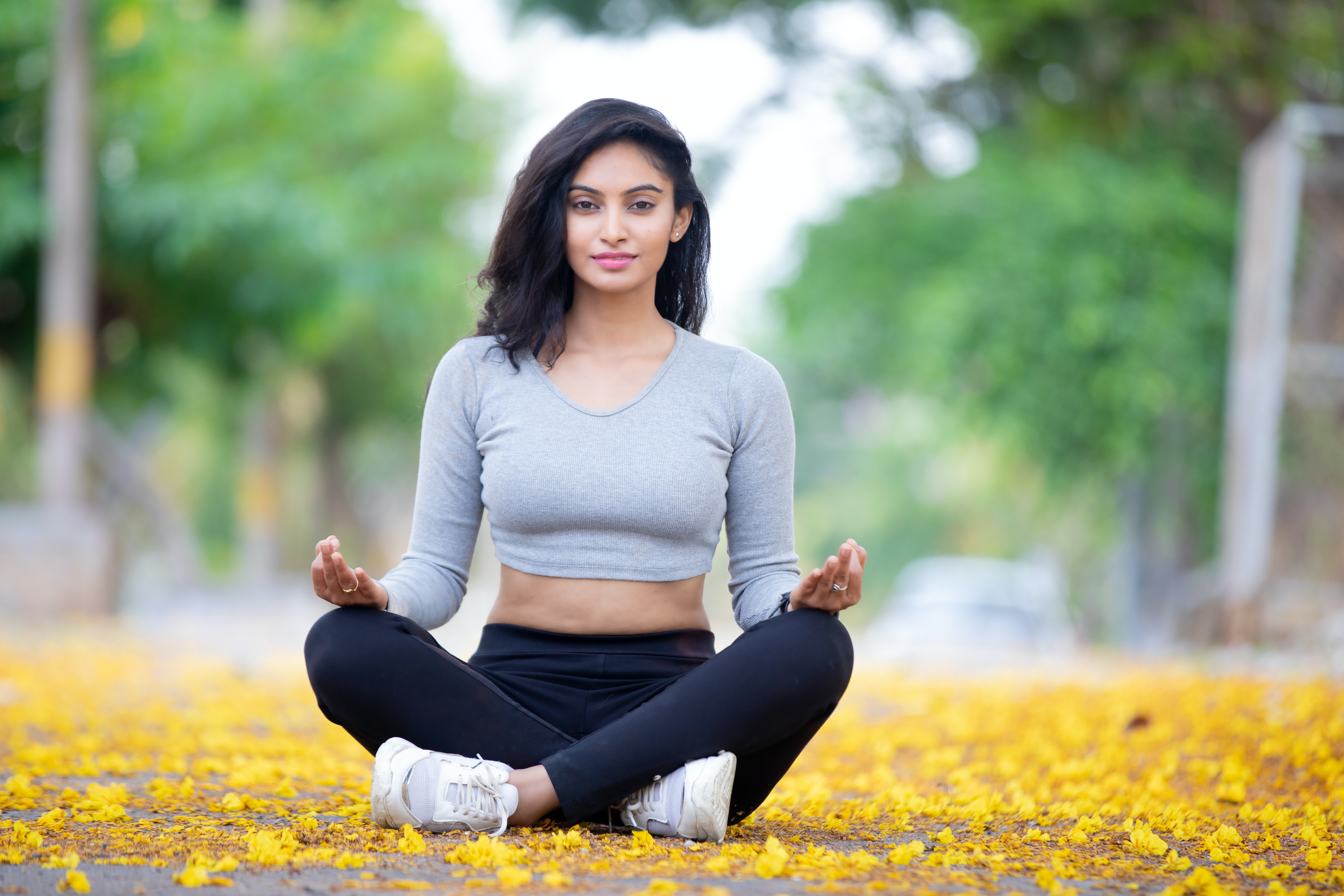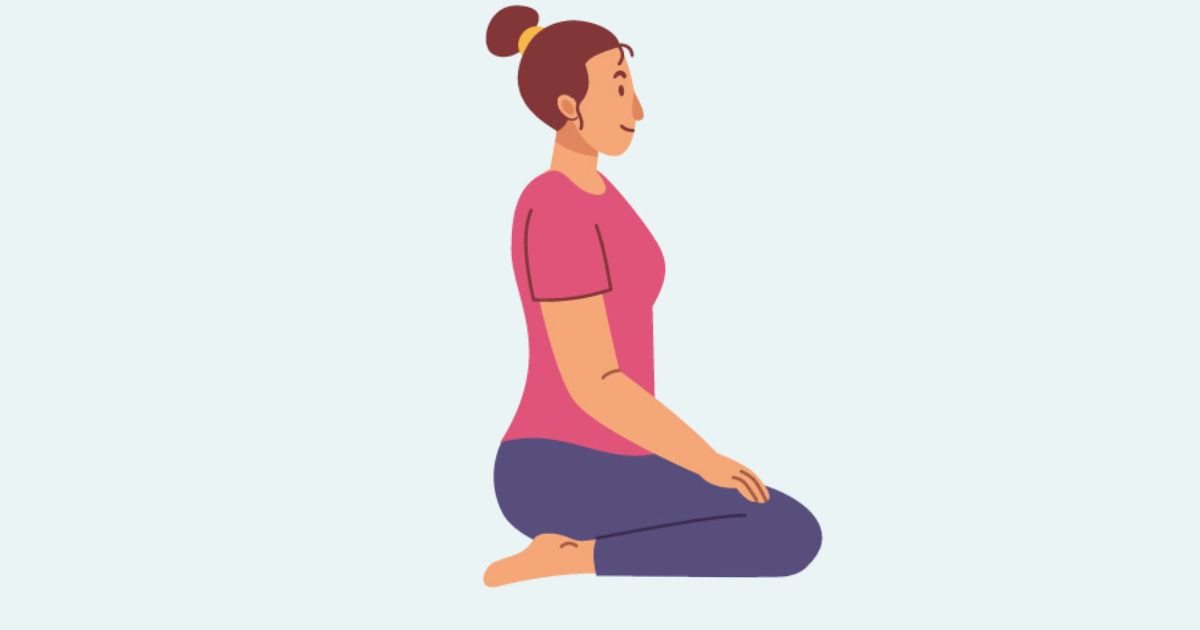Vajrasana is a popular yoga asana, also known as the Diamond Pose or Thunderbolt Pose. “Vajra” means diamond or thunderbolt in Sanskrit, and “asana” refers to a yoga posture or pose. Vajrasana is commonly practiced for meditation, digestion, and promoting overall well-being.
To practice Vajrasana:
- Start by kneeling on the floor or a yoga mat, with your knees together.
- Sit back on your heels, keeping your spine straight.
- Place your palms on your thighs, facing downward.
- Relax your shoulders and rest your hands in a comfortable position.
- Keep your head and neck aligned with your spine, and gaze forward or close your eyes.
- Breathe deeply and relax your whole body.
- Maintain this pose for a few minutes or as long as comfortable.
Vajrasana is considered a sitting posture that provides stability and helps in improving digestion. It is often recommended to practice Vajrasana after meals for better digestion. Additionally, it can be used as a meditation posture to cultivate calmness and focus.
Please note that if you have any knee or ankle issues, it’s advisable to consult with a qualified yoga instructor or healthcare professional before attempting Vajrasana or any other yoga pose.
Benifits of Vajrasana (Diamond Pose)
Vajrasana (Diamond Pose) offers several benefits for both physical and mental well-being. Here are some of the benefits associated with practicing Vajrasana:
- Improved digestion: Vajrasana is known to stimulate the digestive organs, enhancing digestion and alleviating problems like indigestion, gas, and acidity.
- Reduced constipation: This pose helps in regulating bowel movements and relieving constipation by improving digestion.
- Strengthened pelvic muscles: Vajrasana engages and strengthens the pelvic muscles, which can be beneficial for women, particularly during and after pregnancy.
- Relief from lower back pain: By maintaining a straight posture, Vajrasana can help relieve tension in the lower back and provide relief from back pain.
- Increased blood circulation: Sitting in Vajrasana aids in blood circulation to the lower abdomen and pelvic region, benefiting the reproductive organs.
- Calmness and focus: This pose is often used for meditation and pranayama (breathing exercises), promoting a sense of calmness, concentration, and mental clarity.
Restriction of Vajrasana (Diamond Pose)
While Vajrasana has many advantages, it’s important to be aware of certain restrictions or precautions:
- Knee or ankle issues: If you have knee or ankle problems, such as arthritis or injury, Vajrasana may not be suitable for you. It can put strain on the knees and ankles, potentially exacerbating the condition. Seek guidance from a yoga instructor or healthcare professional for modifications or alternative poses.
- Pregnancy: Vajrasana can be practiced during pregnancy if comfortable, but it’s essential to modify the pose to avoid putting excessive pressure on the abdomen. Use additional support, such as cushions or a bolster, to elevate the hips and reduce strain on the knees.
- Digestive disorders: While Vajrasana is generally beneficial for digestion, it may not be suitable for individuals with severe digestive disorders, such as inflammatory bowel disease or gastric ulcers. Consult with a healthcare professional for personalized advice.
- Discomfort or pain: If you experience any discomfort, pain, or numbness while practicing Vajrasana, it’s important to listen to your body and come out of the pose. Every individual’s body is different, so adjust the pose or seek guidance if needed.
Remember, it’s always advisable to learn and practice yoga asanas under the guidance of a qualified yoga instructor, especially if you are a beginner or have any specific health concerns. They can provide personalized instructions, modifications, and ensure your safety during the practice.
-
Surya Namaskar ( Sun Salutation )

Surya Namaskar, also known as Sun Salutation, is a popular sequence of yoga asanas (postures) performed in a flowing manner. It is a holistic exercise that combines physical, mental, and spiritual aspects. Surya Namaskar is traditionally practiced at sunrise to pay homage to the sun, which is considered a symbol …
-
Savasana ( Corpse Pose )

Savasana, also known as the Corpse Pose, is a foundational and deeply relaxing yoga asana. It is typically practiced at the end of a yoga session to promote deep rest and integration. Here’s a description of how to practice Savasana: Savasana is a wonderful practice for releasing physical and mental …
-
Padmasana ( Lotus pose )

Lotus pose, also known as Padmasana in Sanskrit, is a popular seated posture in yoga. It is often associated with meditation and is considered one of the more advanced asanas (postures) due to its level of flexibility and openness required in the hips and knees. Here’s a description of the …
-
Sukhasana (Easy Pose)

Shukhasana, also known as the “Easy Pose” or “Comfortable Pose,” is a basic seated yoga posture that promotes relaxation and grounding. Here’s how you can practice Shukhasana: Benefits of Shukhasana or Easy Pose: Restrictions and Considerations: Note: If you have any pre-existing knee or hip injuries, or if you experience …
-
Vajrasana (Diamond Pose)

Vajrasana is a popular yoga asana, also known as the Diamond Pose or Thunderbolt Pose. “Vajra” means diamond or thunderbolt in Sanskrit, and “asana” refers to a yoga posture or pose. Vajrasana is commonly practiced for meditation, digestion, and promoting overall well-being. To practice Vajrasana: Vajrasana is considered a sitting …
